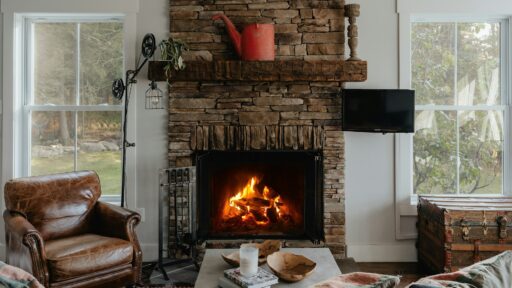Over the past few years, the role of the bedroom has evolved from a simple sleeping space into a personal sanctuary—a retreat where comfort meets style and calm meets functionality. This shift is more than just a design trend; it’s a reflection of our changing lifestyles. With more people working remotely, spending mindful time indoors, and seeking ways to prioritize mental wellness, bedrooms are now expected to be both restful and multi-functional. One of the most critical elements of this evolution? Choosing soft mattresses that support both style and sleep—a key ingredient in making your bedroom feel like the new living room.

The Rise of the Multi-Functional Bedroom
Bedrooms today are doing more than ever before. What was once strictly a place to sleep has transformed into a multi-use space for:
- Relaxation and self-care
- Reading or streaming media
- Zoom calls and remote work
- Yoga and meditation
- Catching up with a partner or having coffee in bed
With this growing list of uses, it’s no wonder designers are focusing on ways to enhance the comfort, calm, and function of this essential space.
Comfort Is the New Luxury
Gone are the days when stiff, formal rooms represented status. Today’s luxury lies in how comfortable and calming a room feels. Bedrooms, in particular, have become the embodiment of this shift.
Comfort-driven design means layering textures, using natural lighting, choosing calming colors, and above all—investing in a mattress that feels like a cloud. A beautiful throw blanket or stylish headboard may catch the eye, but it’s the foundation of your bedroom—the bed—that truly defines how the space functions and feels.
The Psychology of a Calm Space
There’s scientific evidence behind the trend too. Studies show that a well-organized, visually calming space reduces cortisol levels and helps regulate mood and sleep patterns. Neutral color palettes like sage green, soft beige, or dusty rose create a soothing visual environment. Natural elements like wood, linen, and houseplants provide grounding energy. When your bedroom feels peaceful, your brain interprets that space as safe, encouraging deeper rest and emotional well-being.
The living room used to be the central place for winding down after a long day—but now, people are designing their bedrooms to support that same sense of ease, in a more private, personal way.
Blurring the Lines Between Rest and Living
The modern bedroom has taken on elements of the living room—think reading chairs, plush rugs, side tables, artful lighting, and even smart entertainment setups. This blending of functions encourages people to spend more time in their bedrooms, which means every design detail needs to serve multiple purposes.
Imagine sipping coffee in bed with your favorite podcast in the background, reading a novel by the window with ambient lighting, or doing a 10-minute guided meditation on your yoga mat—all in one cohesive space. These moments, once scattered throughout the home, now find a harmonious place in the bedroom.
Key Design Elements That Support the Shift
If you’re rethinking your bedroom layout or planning a refresh, here are some essential elements to consider:
1. A Statement Bed with a Premium Mattress
Your bed is the star of the show. Opt for a frame that reflects your style—whether that’s minimalist, boho, modern, or farmhouse—and pair it with a mattress that provides long-term comfort. The right mattress is essential for both function and form, especially as bedrooms become more than just sleeping quarters.
2. Layered Lighting
Use a mix of lighting sources to adjust the room’s mood throughout the day. Ceiling lights, bedside lamps, sconces, and even fairy lights can create cozy vibes that mimic the relaxing ambiance of a living room.
3. Multi-Use Furniture
A bench at the foot of the bed, a corner reading chair, or a fold-out writing desk can help make your bedroom feel more like a mini-suite than a traditional bedroom. These pieces should be soft, inviting, and aesthetically cohesive with the rest of the space.
4. Soundscapes and Smart Tech
Smart devices like noise machines, dimmable lights, and Wi-Fi-controlled speakers give you control over your comfort. With just your voice or a few taps, you can shift the atmosphere from “focus mode” to “wind down” in seconds.
5. Natural Textures and Personal Touches
Rugs, throws, plants, and hand-picked decor pieces help the room feel lived-in and warm. Consider using items like woven baskets, soft cotton linens, or textured wallpaper to add interest without clutter.
Bedrooms Reflect Lifestyle Priorities
Designing a space that works for your life means being honest about how you use it. Do you unwind with a book or binge-watch a favorite show? Do you journal, meditate, or drink tea in bed? Then your bedroom should reflect those rituals.
We no longer live in homes where rooms serve only one purpose. As open-concept living and hybrid work-from-home schedules become the norm, every square foot of your home should feel intentional. Bedrooms that double as lounges, reading nooks, or workstations aren’t an indulgence—they’re smart design.
The New Standard: Restful and Ready for Life
Whether you live in a studio apartment or a multi-bedroom home, the bedroom’s elevated role can’t be ignored. It’s the one place where you should feel totally at ease—free from the distractions of the world, yet prepared to handle whatever life throws at you.
Investing in the right mattress, soft furnishings, calming colors, and flexible layouts means you’re not just decorating—you’re designing a space that supports your mental health, productivity, and overall happiness.
Conclusion: Design for What You Deserve
As our homes continue to evolve to meet new demands, the bedroom stands out as the ultimate space for both comfort and calm. By transforming it into a living room of sorts—complete with the right ambiance, versatile design, and a focus on well-being—you create a retreat that feels tailor-made for you.
So, whether you’re redecorating from scratch or simply adding a few mindful upgrades, remember: the most valuable room in your home might just be the one you once overlooked.







